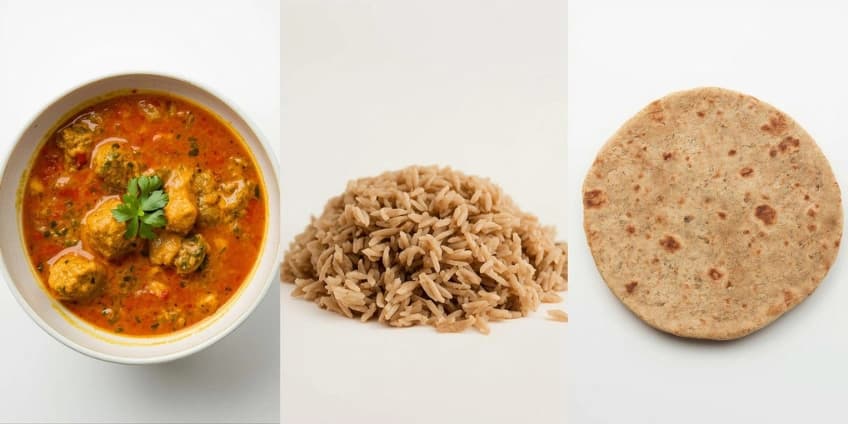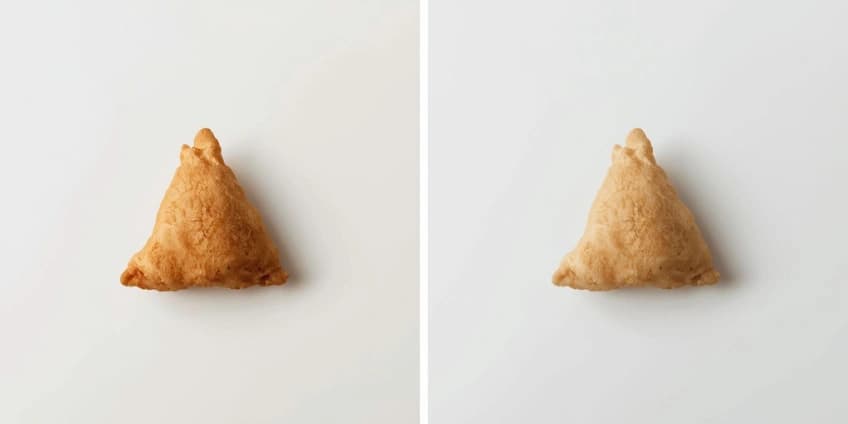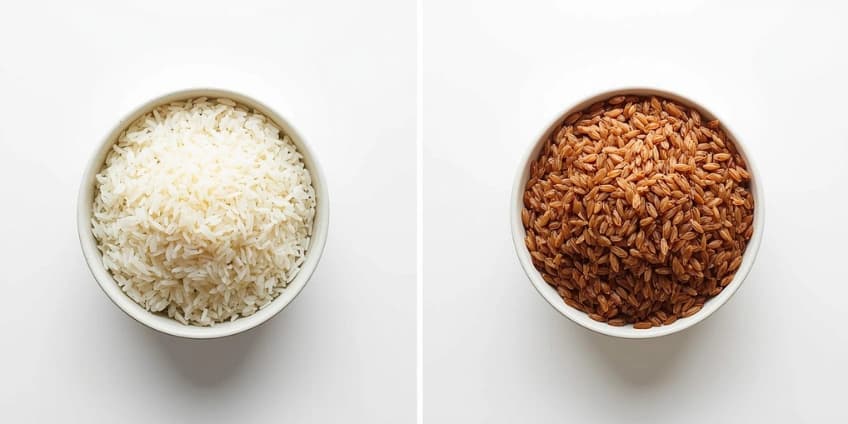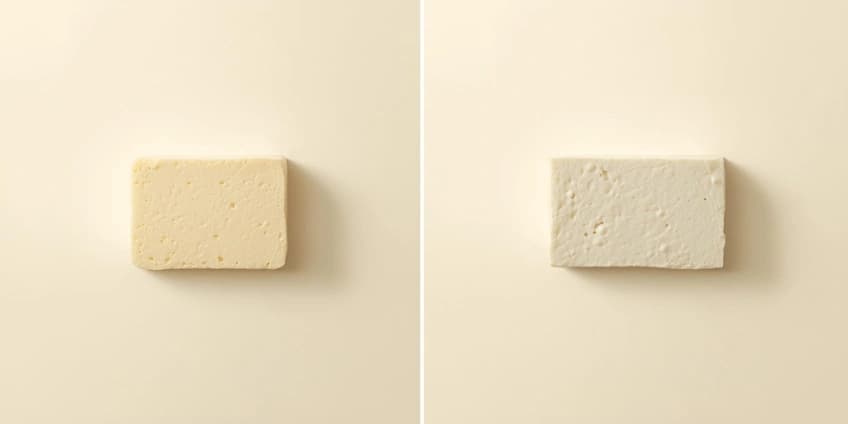🇮🇳 Ultimate Guide: Healthy Swaps for Indian Cooking

Part of our International Cuisine Swaps Guide series
Indian cuisine is one of the most flavorful in the world, packed with anti-inflammatory spices like turmeric, ginger, and cumin. But many popular restaurant-style dishes can be very heavy, relying on large amounts of ghee (clarified butter), heavy cream, and refined carbs.
Here’s how to make your favorite Indian dishes healthier at home without sacrificing their authentic, delicious flavor.
🧈 The "Fat" Swaps (Ghee, Cream, Frying)
1. Ghee (Clarified Butter) → Avocado Oil or Less Ghee

- The Problem: Ghee is a traditional staple, but it's still 100% saturated fat. Many recipes call for 1/4 cup or more.
- The Swap: For sautéing (tadka or tempering), use 1-2 tbsp of a high-heat oil like avocado oil.
- Flavor-Saver Tip: Use 1 tbsp of avocado oil for the main cooking, and add just 1 tsp of ghee at the very end for that authentic, nutty aroma. You get all the flavor for 80% less fat.
2. Heavy Cream → Coconut Milk or Cashew Cream

- The Problem: Cream is what makes Butter Chicken and Kormas so rich, but it's very high in saturated fat and calories.
- Swap 1: Light Coconut Milk. The perfect 1:1 swap in South Indian or Bengali curries (like Korma) where coconut is already a common flavor. Savings: 60% fewer calories.
- Swap 2: Cashew Cream (DIY). This is the ultimate swap for North Indian curries. Soak 1/2 cup raw cashews in hot water for 30 mins, then blend with 1/2 cup water until perfectly smooth. It's creamy, rich, and dairy-free.
3. Deep Frying (Samosas, Pakoras, Vada) → Air-Frying or Baking

- The Problem: Deep-frying soaks these delicious snacks in oil.
- The Swap: Use an Air-Fryer!
- How: Lightly spray your homemade samosas or pakoras with avocado oil spray. Air-fry at 375°F (190°C) for 10-15 minutes, flipping halfway.
- Result: You get a perfectly crispy, golden-brown snack with up to 80% less fat.
🍚 The "Carb" Swaps (Rice, Naan)
1. White Basmati Rice → Brown Basmati Rice or Quinoa

- The Problem: White rice is a refined carb that can spike blood sugar.
- Swap 1: Brown Basmati Rice. A simple 1:1 swap. It has the same basmati aroma but with all the fiber and B-vitamins intact. (Note: It takes 40 mins to cook, not 15).
- Swap 2: Quinoa. A high-protein, high-fiber, low-glycemic alternative that is fantastic for "sopping up" a good curry.
2. Naan Bread → Roti / Chapati (Whole Wheat)

- The Problem: Naan is a restaurant favorite, but it's made with all-purpose flour (maida), yogurt, and ghee.
- The Swap: Opt for Roti or Chapati. These are a daily staple in India and are traditionally made with 100% whole wheat flour (atta) and water.
- Result: You get a delicious flatbread that is packed with fiber instead of empty carbs.
🥛 The "Dairy" Swaps (Paneer, Yogurt)
1. Paneer → Extra-Firm Tofu

- The Problem: Paneer (a fresh cheese) is delicious but high in saturated fat.
- The Swap: For a vegan or lower-fat option, use Extra-Firm Tofu.
- Pro-Tip: Press the tofu first to remove all water, cube it, and pan-fry it until golden before adding it to your sauce (like in Palak Tofu or Matar Tofu).
2. Yogurt (in Raita & Marinades) → Plain Greek Yogurt

- The Problem: Traditional yogurt (dahi) is great, but you can upgrade it.
- The Swap: Use Plain Greek Yogurt for your raita or tandoori marinades.
- Result: You get the same tangy flavor and creamy texture, but with double the protein, which makes the meal far more satiating.
🔥 How to Keep the Flavor (The Most Important Part!)
Healthy Indian food should never be bland. The flavor doesn't come from the cream; it comes from the spices.
- Toast Your Spices: Always "bloom" your whole spices (like cumin seeds, mustard seeds, cardamom) in the hot oil for 30 seconds before adding onions. This releases their fat-soluble flavors.
- Use the "Trinity": Never skimp on the aromatic base of ginger, garlic, and onion. Finely mince them for the best flavor.
- Don't Forget the Acid: A final squeeze of lemon or lime juice at the end of cooking brightens all the flavors and cuts through the richness, reducing the "need" for so much salt or fat.
About Our Nutritional Data
All nutritional data in this article is sourced from the U.S. Department of Agriculture (USDA) FoodData Central database. We prioritize accuracy to ensure our swaps are evidence-based and trustworthy. Nutritional values may vary slightly based on brands and preparation methods.
🌎 Explore More World Cuisines
This guide is part of our comprehensive International Cuisine Swaps Guide series.
Discover healthy swaps for cuisines from around the world:
- 🇵🇭 Filipino Cooking Swaps
- 🇨🇳 Chinese Cooking Swaps
- 🇹🇭 Thai Cooking Swaps
- 🇮🇹 Italian Cooking Swaps
- 🇲🇽 Mexican Cooking Swaps
- 🇯🇵 Japanese Cooking Swaps
Happy cooking! 🍛✨
About the Author

This article was written by Ant Real, the founder of SwapHealthy. As a parent, home cook, and developer, Ant is passionate about making healthy eating accessible and delicious for everyone. He created SwapHealthy to share his personal journey and the science-based swaps his family uses to enjoy their favorite foods in a healthier way.